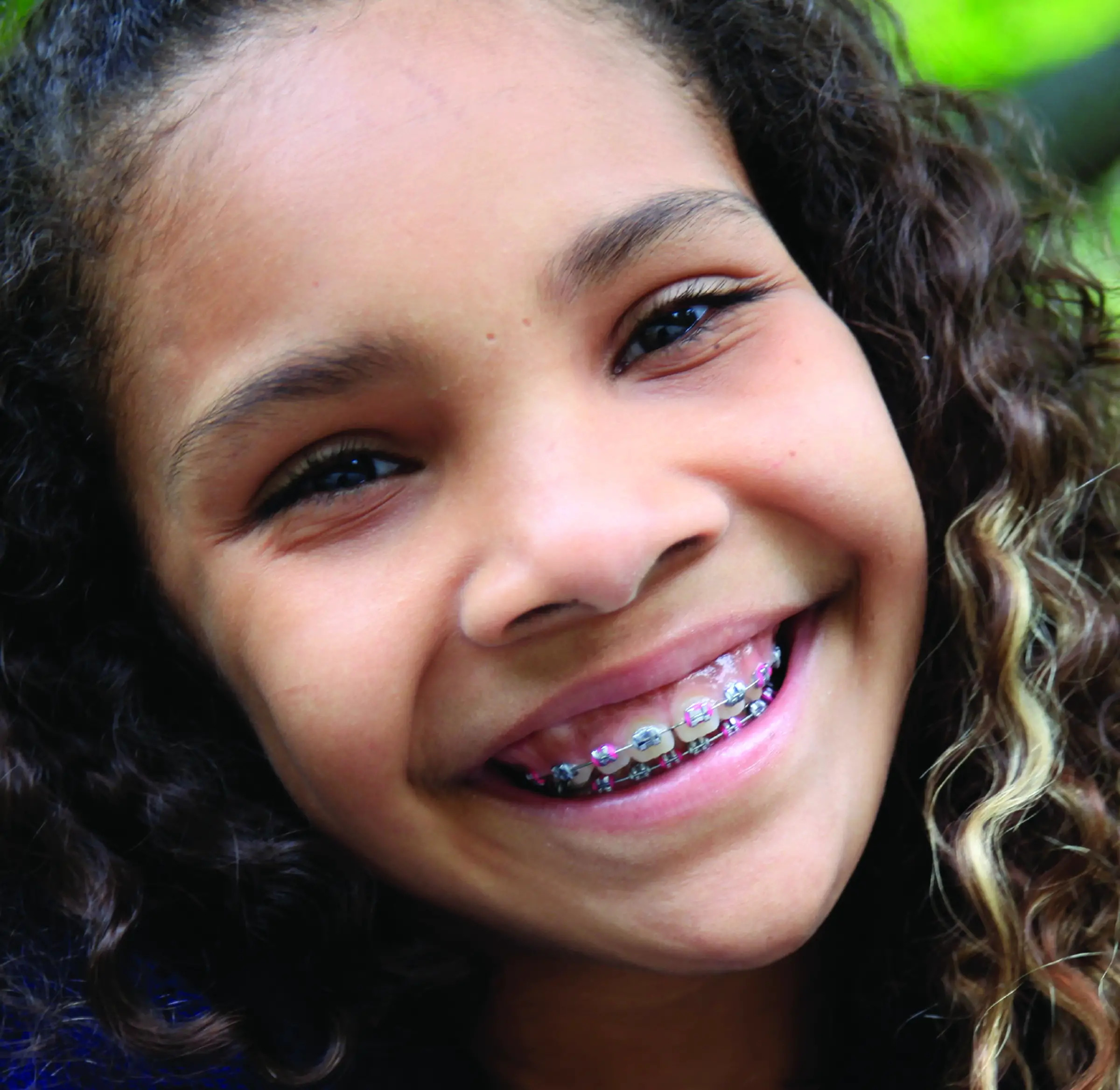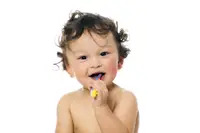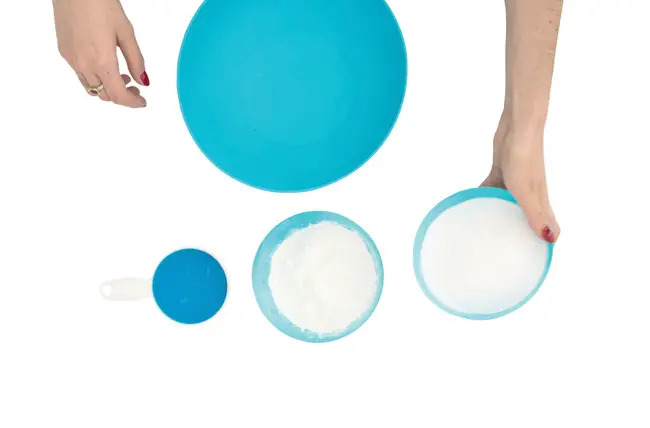Read on for expert dental advice to keep your kids smiling bright. Here, local dentists and orthodontists answer various questions from parents…
The Experts:
• Angela Boudounis, DDS, of Nyack Pediatric Dentistry
• Jennifer Epstein, DMD, of Kids First Pediatric Dentistry & Orthodontics in Fairfield, CT
• Erica Fish, DDS, of M.E. Smiles Dental PC in Hartsdale
• Suho Lee, DDS, of Tooth Fairy Pediatric Dentistry in Ridgefield, CT
• Jonathan Mender, DDS, of Madison Dental Group in NYC
• Amy Paundlay, Special Needs Liaison for Kids First Pediatric Dentistry & Orthodontics in Fairfield, CT
• Stacey Reynolds, DDS, of Pediatric Dentistry of Garden City
Some Dental Advice…
Should my child get braces if all of his adult teeth have still not come in?
Dr. Mender: Traditionally, the orthodontist would wait until all of the child’s adult teeth were in. Now, a lot put them on much earlier. In phase 1, expanders are used to create better ways to get all the teeth in and move stuff around while the child is still growing. Phase 2 is the refinement stage where the orthodontist closes any spaces.

Dr. Epstein: With braces, I would say the typical age range is 6-10. For phase one, the goal is to fix a crowding or skeletal issue and make the second phase easier. If there were no advantage to the first phase, then you wouldn’t do it. The only things that could happen is if they expanded too early and there is a relapse due to maturity or the child couldn’t tolerate the braces and they had to be taken off. As for the relapse, there is no way to tell if that will happen. It is kind of an occupational hazard, but do your homework, get second opinions, and don’t be afraid to ask questions.
When I was a child, I had braces for three years, and I had to have braces put on again as an adult because my teeth were ultimately misaligned. What can I do to ensure that history does not repeat itself with my own child?
Dr. Mender: I hear this all the time. Wear your retainer always because teeth relapse. They’re going to want to go back to how they were before the braces, and they will slowly creep back. The front teeth tend to twist.
My four-year-old throws a tantrum every night when he’s told to brush his teeth. How do we get him into the routine and avoid the protests?
Dr. Lee: Try to make it a fun event for the child instead of forcing him to brush. First, let the child brush on his own while listening to a song he likes. You can sing along and encourage brushing until the song ends. Then compliment how well the child did and ask if you can take a look to see if he ‘missed a spot.’ Then try to brush as best as you can. The key is to motivate the child and repeat the event every day so that they get into routine of brushing without much resistance. There are also many books and videos that can help and motivate the child to brush better, which I encourage families to read or watch together.
Amy Paundlay: There is no rule that says brushing has to be done in the bathroom at the sink. Maybe it’s easier in a lap-to-lap position or a position on the bed.
What should I do if my child has chipped a front tooth on the playground?
Dr. Lee: Make sure to examine the entire face and head to see if other areas are involved in the accident. If the trauma is only to the teeth, then see if the tooth has been displaced, if there is any bleeding involved, or if the tooth is pushed in or pulled out of the socket. In such cases, parents should seek immediate guidance from their dentists. As a general rule, any trauma to the teeth should be evaluated by the dentist asap.
Are there any alternatives to wearing a retainer once braces have come off for a child who is prone to misplacing her retainer (in the locker room, on the bus, and everywhere in between)?
Dr. Mender: An alternative to a retainer is to bond a wire behind the teeth. Although the downside is that it’s harder to clean, parents don’t have to worry about compliance or kids throwing it away.
My 7-year-old hates visiting the dentist, and his fear seems almost irrational. What techniques can you suggest to calm him down? Are there things that a dentist can do to sooth nerves or distract such a phobic kid?
Dr. Epstein: We work in an anxiety-provoking setting. It’s really about communication. We want a heads-up about the child’s sensitivities. It could be sounds, smells, visuals, or maybe they can’t stay in the room. The position [for an exam] can be anything. I’ve done exams standing, sitting in my chair, laying down in the chair-almost every way you can think of. We do a lot of lap exams. We also need to know what the parents are comfortable with. I need to know what I can do within the limits of what they are comfortable with. We also employ “tell, show, do,” in which we tell the child what we are going to do, show them on Mom or Dad’s finger or in Mom or Dad’s mouth, and then do it on the child. It’s all about familiarity, repetition, and modeling behavior. Maybe we let them see another kid getting their teeth counted.
Are there any new technologies parents should be aware of that will impact their child’s visit to the dentist or their dental health?
Dr. Lee: There have been many technological achievements within dentistry over the years, but in my opinion, nothing is better than prevention. Sealant, which is a very thin coat of resin-based material, can be placed on kids’ molar teeth to prevent dental decay. Also, now there are laser-guided diagnostic tools that a dentist can use to detect cavities that might not be so visible to naked eyes. This way, very small cavities can be treated at an early stage, which means easier treatment and a cost-effective and happy dental visit for the kid and the parents.
Any advice for caring for kids’ teeth that is different from what we as parents might have received when we were younger?
Dr. Boudounis: I would stress the importance of flossing. The need varies among children but is usually determined if adjacent teeth are in contact with one another.
Dr. Fish: There is often a misconception about the importance of treating baby teeth. It is very important that primary, or baby, teeth are kept in place until they are lost naturally, as they serve a number of critical functions. They aid in speech development, assist in maintaining good nutrition, and guide the adult teeth into place. Healthy mouths boost a child’s self esteem and are directly related to good school performance.
Dr. Lee: Proper brushing and flossing on a daily basis are still the best ways to prevent dental-related problems.

At what age should a child begin to brush with fluoride?
Dr. Lee: Most of the toothpaste on the market has fluoride in it. My recommendation is to refrain from using fluoridated toothpaste until the child is able to rinse thoroughly on her own and not swallow. Too much fluoride consumption can be harmful and therefore should be discussed with the dentist. Parents can certainly train and practice with the child to rinse properly with plain water before introducing fluoridated toothpaste.
What is the most commonly asked question you get from patients?
Dr. Boudounis: “My son or daughter has a new tooth growing in behind the baby tooth on the lower arch. What should I do?” The answer is usually nothing. Most of the time the tongue puts pressure on the adult tooth and gradually moves the adult forward thus knocking out the baby tooth. There are times that this does not happen and the baby tooth will need to be extracted. If the same situation occurs in the upper arch, then it is important for the parent to call the dentist for an evaluation. Most of the time the baby tooth in this situation needs to be extracted. Another common question or concern parents have is, “My child grinds his/her teeth at night. What should I do?” The answer is nothing when the child has only baby teeth. Children usually outgrow this habit. The dentist will monitor the child at future check-up visits. Close observation is needed to prevent wear on the adult teeth. Then, a nightguard may need to be fabricated.
Dr. Reynolds: For first-time patients or parents, it’s usually, “At what age was I supposed to bring my child to the dentist?” I find that a lot of parents are being told by either their general dentist or pediatrician that they do not have a dental exam until age 3, sometimes older. The official recommendation by the American Academy of Pediatric Dentistry and the American Academy of Pediatrics is age 1.
The Dentists Weigh In…
On getting young children to the dentist:
Dr. Mender: Our thought [at Madison Dental Group] is the earlier, the better. Around 2-4 years old is a good age depending on how tolerant the child is with the parents when they brush his teeth. Also, if the child goes bonkers at the pediatrician, he’s not ready. By age six or seven, some kids start getting their adult teeth. You want to bring the child in before that, and if there is any pain or difficulty eating, they should come in as soon as possible.
Dr. Boudounis: The earlier a child visits the dentist is in itself the best way for a young child to get used to going to the dentist. Initial visits for very young children usually consist of an exam only. The exam is usually quick and easy for the child. The child usually leaves with a goody bag and hopefully returns to the office in the future less apprehensive.
Dr. Reynolds: It’s all about habits and familiarity. If you start young, you will get little resistance as they grow older. Make it fun for them by starting off in preventative mode rather than going to the dentist because something is wrong. And, make sure they go to a pediatric dentist. The experience is so much more positive than what most parents think.
Dr. Fish: Our goal is to begin your child’s dental visits at a young age before problems arise. Young children do well at early visits by modeling parents or cooperative older siblings. Also, making good dental hygiene and healthy diets at home a priority will develop a lifetime of healthy habits for your child.
On making the dentist less scary for children with special needs:
Dr. Boudounis: Parents of children with special needs should begin good dental habits and routines as soon as possible, no matter how difficult it may seem. Many special needs patients have sensory issues that make the dental visit challenging. New textures, tastes, and sounds can be upsetting. The earlier a child gets accustomed to brushing at home, the less sensitive they will be at the dental visit. Also, it is important that parents communicate the child’s likes and dislikes to the dentist in order to bring about a pleasant visit.
Dr. Reynolds: These children need to acclimate to the environment, so starting early is very important. More positive exposure equals better behavior in the long run. Usually these visits aren’t as stressful for the child as much as it is for the parents. Think of the visit as an informative one, a visit that is important for prevention. The most important part of any dental visit is the examination.
On the benefits of seeing specialists:
Dr. Epstein: A lot of parents wonder, “why should I go to a specialist?” The answer is that specialists go through extra training in the things that make parents uncomfortable, such as behavior management. It is a huge part of treating patients holistically. We are also happy to do the things that many other dentists don’t feel comfortable doing. People can absolutely go to their family dentist, but many will refer patients if they don’t want to deal with a behavioral issue.
On how a special needs liaison can help:
Amy Paundlay: Imagine if you weren’t able to process the events that were taking place. [At Kids First Pediatric Dentistry & Orthodontics] our program is specifically designed to treat children and adults with dental fears or with special needs. The program is modeled after how these kids are taught in school. We keep it consistent so they become familiar with that specific dentist’s face. Once the appointment is made, I return their call with a comfort call to reduce any anxiety that they may have and walk them through the process. When I call, I go through a whole list of questions about the child and his or her likes and dislikes in order to create an individualized program specifically for that child.
Next, I gather visual aids and toys and send it to their house. The kit includes role-playing items such as a mouth mirror and gloves and checklists as well as a social story, sequenced in pictures, that links the child from their house to the office. Once they get here, they are already kind of prepared and we take them to the appropriate area. Sometimes I’ll be there blowing bubbles or we’ll sing songs or make a game of counting or following the bubbles so the child doesn’t realize he or she is being brought to the back.
For some kids the smell bothers them, some kids the chair moving bothers them. We have special products for every aversion or a way to get around any sensitivity the child might have. If the chair moving is the issue, we can have the chair in place already and the child just needs to climb in. For taste and texture sensitivities, we have a special polishing brush that does the same thing as a regular polishing brush, but does not have any toothpaste on it.
Generally, we have short appointments or get things done on sequential visits. There is a general sedation option, but most kids don’t need it. We really let the kids be our guide. We also offer a quiet tour when the offices are closed from 1-2pm. It’s free and anyone can stop by. It really reduces anxiety for the parents and for the kids to be able to see the office when it’s not busy. The quiet tour always ends happy because kids only need to stay for 5 minutes and they get a prize.
Related Posts
How to Save Your Child’s Tooth in a Dental Emergency
How To Teach Teeth Brushing Basics to Young Children





















